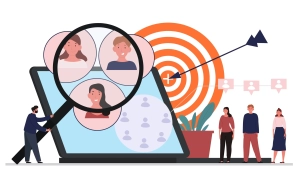
Six Steps To Better Use Of Marketing Analytics & Dashboard
Using marketing analytics is essential to being able to judge the performance of your marketing efforts. They allow you to see what is and isn’t working in real time, thereby letting you adjust your strategy. Not only do marketing analytics improve your marketing efforts, but they also make you much more efficient. You don’t end up wasting a lot of time and money on tactics that aren’t working.
Considering what an essential part your marketing analytics dashboard plays in the effectiveness of your marketing strategy, it should come as no surprise that marketing analytics continue to grow in importance, with many companies devoting bigger and bigger portions of their budget to their analytics capabilities. To ensure you’re making the most out of your marketing analytics dashboard, be sure to follow these six steps:
1. Embed Analytics Into Marketing Decisions
Analytics should not be a mere complimentary tactic to your marketing strategy that allows you to see how you’re doing — it should be an important part of the marketing decision making process. Once you begin using analytics, you should use the data you’ve gathered from previous campaigns to help inform future campaigns and strategies.
2. Use Your Analytics For A Better Understanding Of Your Customer

Marketing analytics can help provide you with incredible insight into your customers, thereby providing all kinds of opportunity for growth. The challenge is in collecting data from a wide range of data points. The reason that this is a challenge is that there are often barriers between marketing, operations, and sales data. If you can gather and analyze data from all three of these facets of your business, you’ll be able to get a more complete picture of your customer, thereby allowing you to form a much more effective marketing strategy.
3. Develop And Hire Talent That Understands Marketing Analytics
Marketing analytics is unique in that it requires analytical thinking to read and understand the data, but it also requires creativity to put that data to use in actionable steps. You’ll want to focus on developing and hiring talent that understands both the science of analytics and the art of analytics, which is no easy feat. However, having such individuals on your team will help you get the absolute most out of your marketing analytics.
4. Organize Your Analytics Operating Model
If you’re going to embed your marketing analytics dashboard into your company’s marketing decision-making process, then it’s important that you organize its operating model to reflect how decisions are made. For example, if your company makes your marketing decisions by brand, then you might want to dedicate analytics resources.
The Buyers Journey Explained Stage By Stage
5. Focus Marketing Analytics On New Opportunities
One of the common traps companies fall into is using their analytics to adjust their marketing tactics on current strategies. While you should certainly do this, you should also leverage certain marketing analytics, such as data mining and predictive analytics, to find new opportunities, such as new marketing strategies, new business models, new markets, and more.
6. Learn When To Measure And When To Act
The use of analytics allows you to analyze and measure data at any time, but knowing when to act on that data you have can be tricky. There’s the temptation to want to wait until you can measure everything and obtain more data before making key decisions. Waiting too long can cause you to miss out on potential opportunities. On the other hand, constantly acting on the data you have can be a serious mistake as well. Many strategies do take time before you’ll begin seeing results.
As you know, using analytics will help you get the most out of your marketing strategy. These tips will help you get even more out of your marketing analytics dashboard.























 These infographics keep the readers on your site longer, increasing the chances that they will convert into leads or customers. The interactive elements also make your content more shareable, which can lead to increased brand awareness and improved search engine rankings.
These infographics keep the readers on your site longer, increasing the chances that they will convert into leads or customers. The interactive elements also make your content more shareable, which can lead to increased brand awareness and improved search engine rankings.



